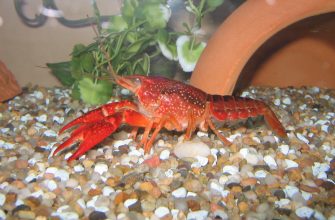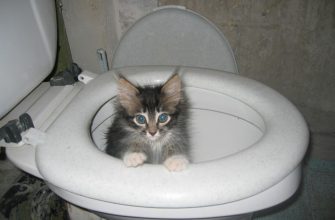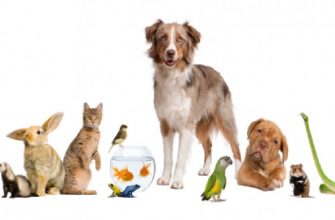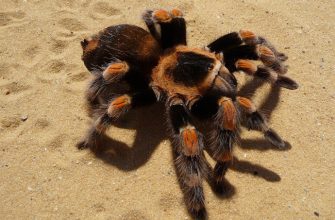About the capybara
The capybara is a large, semi-aquatic rodent native to South America. It is the largest rodent in the world, with adult individuals typically weighing between 35 and 66 kg (77 and 146 lbs).
Capybaras are social animals and are often found living in groups of up to 20 individuals, typically led by a dominant male. They are herbivorous and feed primarily on grasses and aquatic plants, as well as fruits and bark.
These animals are well adapted to their semi-aquatic lifestyle, with webbed feet that make them excellent swimmers, and the ability to hold their breath for up to five minutes. They are also known for their docile and friendly nature, and are sometimes kept as pets in their native South America and other parts of the world.
Capybaras are not considered endangered, but their populations are threatened by habitat loss and hunting, as their meat is considered a delicacy in some regions.
Capybara species overview
There is only one species of capybara, Hydrochoerus hydrochaeris, which is found throughout most of South America, except for Chile. Within this species, there are several subspecies, including:
- Hydrochoerus hydrochaeris isthmius: Found in Panama and Colombia.
- Hydrochoerus hydrochaeris hydrochaeris: Found in Brazil, Venezuela, Guyana, Suriname, French Guiana, Peru, and Bolivia.
- Hydrochoerus hydrochaeris colombianus: Found in Colombia and Venezuela.
- Hydrochoerus hydrochaeris centralis: Found in Paraguay, Uruguay, and Argentina.
While there is only one species of capybara, there are other species in the Hydrochoeridae family, which are closely related to capybaras. These include:
- Myocastor coypus (nutria or coypu): A semi-aquatic rodent found in South America and introduced to other parts of the world.
- Kerodon rupestris (rock cavy): A small rodent found in Brazil.
- Kerodon acrobata (acrobat cavy): A small rodent found in Brazil.
- Kerodon ssp. (rock cavies): Several other species of small rodents found in South America.
Despite their similarities to capybaras, these other species have some distinct differences, such as smaller size or different physical characteristics.
Capybara care and maintence
Capybaras are social animals that require a lot of space to move around and interact with each other. If you’re considering keeping a capybara as a pet, it’s important to understand their care and maintenance requirements.
- Space: Capybaras need a large, fenced-in area to roam and play in. The minimum recommended size for a pair of capybaras is around 20 square meters (215 square feet), but larger is always better. They are also semi-aquatic animals and will require access to a pool or pond for swimming and cooling off.
- Diet: Capybaras are herbivores and require a diet rich in fiber, such as hay and grasses. They also need access to fresh water and may enjoy fruits and vegetables as occasional treats.
- Health: Capybaras are generally healthy animals, but they can be prone to certain health issues such as skin problems, dental issues, and obesity. It’s important to schedule regular check-ups with a veterinarian who is experienced in treating exotic animals.
- Socialization: Capybaras are social animals and do best when they have other capybaras to interact with. If you plan to keep a single capybara, be prepared to spend a lot of time socializing with it yourself.
- Legal requirements: Before keeping a capybara as a pet, it’s important to check your local laws and regulations. Some areas may require permits or have restrictions on owning exotic animals.
In summary, capybaras require a lot of space, a specialized diet, regular health check-ups, socialization, and adherence to legal requirements. They are not recommended as pets for everyone and should only be considered by those who are committed to providing proper care and attention.
Capybara house training
Training a capybara to use a litter box or to go potty in a specific area can be challenging, but it’s possible with patience and consistency. Here are some tips for house training a capybara:
- Start early: If you’re getting a young capybara, start house training as soon as possible. It can be harder to train older capybaras who have already developed habits.
- Use positive reinforcement: Reward your capybara with treats and praise when they go potty in the designated area. Positive reinforcement is key to getting them to repeat the behavior.
- Designate a specific area: Choose a specific area where you want your capybara to go potty and consistently bring them to that spot. Over time, they will associate that area with going potty.
- Be patient: Capybaras may take some time to get the hang of going potty in a specific area, so be patient and consistent with your training. It may take several weeks or even months for them to learn.
- Consider a litter box: Capybaras can be trained to use a litter box filled with hay or shredded paper. Place the litter box in a convenient spot and show your capybara how to use it.
It’s important to note that not all capybaras can be fully house trained and accidents may happen. It’s also important to regularly clean up any messes to prevent odors and maintain a clean living space for your capybara.
Capybara compatibility with other pets
Capybaras are social animals that get along well with others of their own species and can also coexist peacefully with some other types of pets. However, it’s important to introduce any new pets slowly and carefully to ensure their safety and well-being. Here are some tips on capybara compatibility with other pets:
- Other Capybaras: Capybaras are highly social and do best when they have other capybaras to interact with. If you plan to keep a capybara, consider getting at least two so they can socialize and play together.
- Dogs: Capybaras may get along well with dogs, especially if they are introduced at a young age. However, it’s important to supervise their interactions and make sure the dog doesn’t become aggressive or chase the capybara.
- Cats: Capybaras may view cats as prey and could become aggressive towards them. It’s generally not recommended to keep capybaras and cats together.
- Birds: Capybaras may be curious about birds but are unlikely to harm them. However, birds should be kept in a secure enclosure to prevent them from accidentally flying into the capybara’s space.
- Other Small Animals: Capybaras may get along with other small animals like rabbits or guinea pigs, but again, it’s important to supervise their interactions and ensure they are not aggressive towards each other.
In general, it’s important to remember that capybaras are large animals and may unintentionally harm smaller pets. Always supervise any interactions between pets and introduce them slowly and carefully.
Capybara things to consider
If you’re considering keeping a capybara as a pet, there are several things you should consider before making a decision:
- Space: Capybaras are large animals and require a lot of space to move around and interact with others of their species. They need a fenced-in outdoor area with plenty of grass and access to water for swimming.
- Socialization: Capybaras are social animals and need the company of other capybaras to be happy and healthy. If you’re only able to keep one, you will need to spend a lot of time socializing with your pet to prevent loneliness and boredom.
- Diet: Capybaras are herbivores and require a diet rich in fiber, such as hay and grasses. They also need access to fresh water and may enjoy fruits and vegetables as occasional treats.
- Health: Capybaras are generally healthy animals, but they can be prone to certain health issues such as skin problems, dental issues, and obesity. Regular check-ups with an experienced exotic animal veterinarian are essential to ensure your capybara stays healthy.
- Legal requirements: Before getting a capybara, it’s important to check your local laws and regulations to ensure you are allowed to keep an exotic animal as a pet. Some areas may require permits or have restrictions on owning capybaras.
- Lifespan: Capybaras can live up to 8-10 years in the wild, but can live up to 12 years in captivity with proper care. Consider the long-term commitment of caring for a capybara before getting one as a pet.
- Cost: Capybaras can be expensive to purchase and require ongoing expenses for food, veterinary care, and housing. Make sure you are prepared for the financial commitment of owning a capybara before getting one as a pet.
In summary, capybaras are unique and fascinating animals that can make great pets for those who are willing and able to provide proper care and attention. However, they require a lot of space, socialization, a specialized diet, regular health check-ups, adherence to legal requirements, and a long-term commitment. It’s important to carefully consider all of these factors before deciding to get a capybara as a pet.







